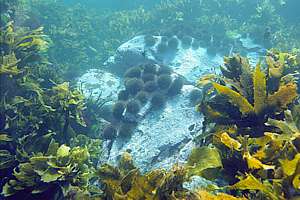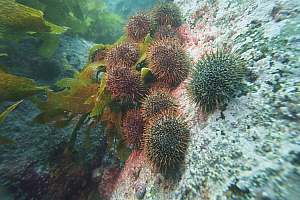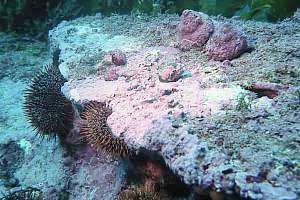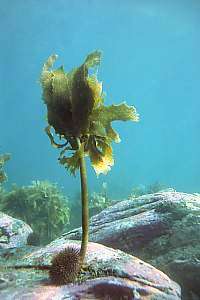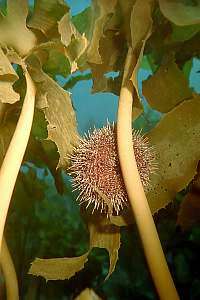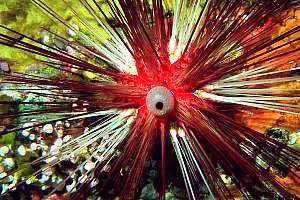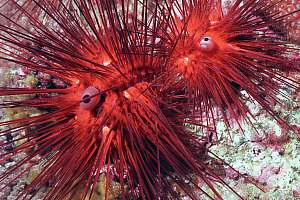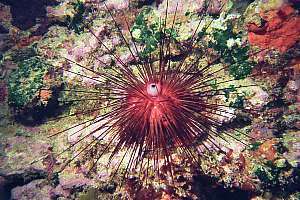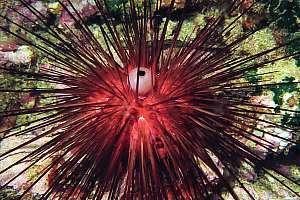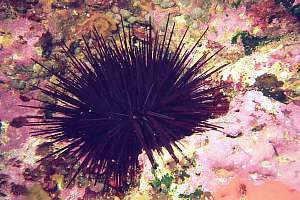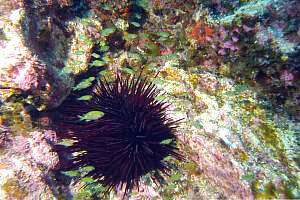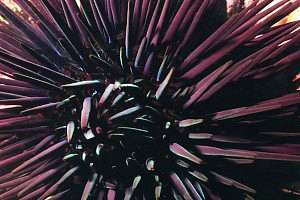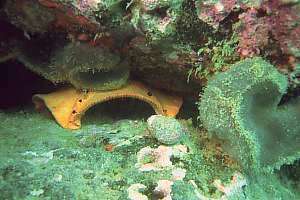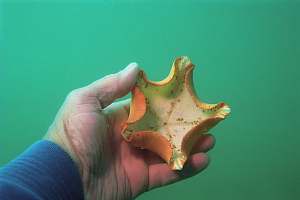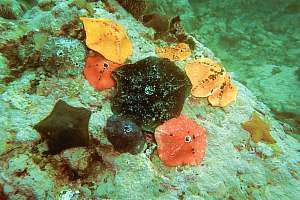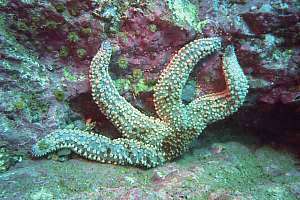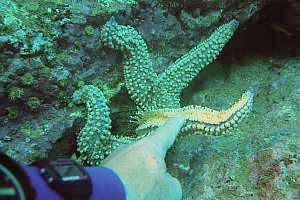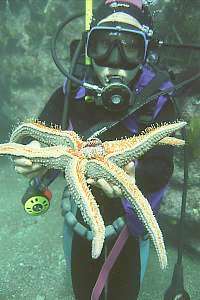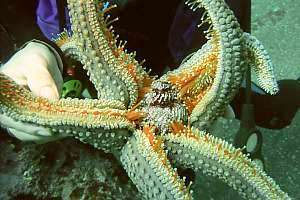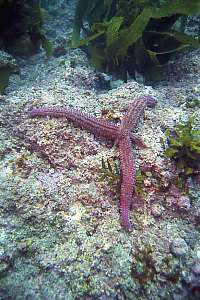 f010702: a seven-armed star has suffered size reduction by
the predating trumpet whelk (Charonia) who specialises on sea stars.
After giving a star chase with large steps, the trumpet whelk pins it down
with its large siphon, then steps onto the immobilised arm. Realising it
has been trapped, the starfish then sacrifices its arm, running away with
the others. But the trumpet whelk is persisten in its hunt, as this star
has found out, but some of its arms are regrowing already. Astrostole
scabra
f010702: a seven-armed star has suffered size reduction by
the predating trumpet whelk (Charonia) who specialises on sea stars.
After giving a star chase with large steps, the trumpet whelk pins it down
with its large siphon, then steps onto the immobilised arm. Realising it
has been trapped, the starfish then sacrifices its arm, running away with
the others. But the trumpet whelk is persisten in its hunt, as this star
has found out, but some of its arms are regrowing already. Astrostole
scabra |
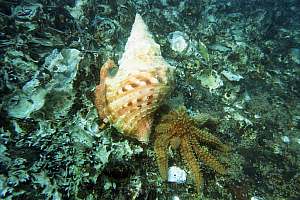 f017234: a trumpet whelk (Charonia lampas capax) has
just pinned down an eleven-armed prickly star with its siphon (Coscinasterias
calamari), and is now going to place its large foot onto the caught
arm. The victim has already lost one arm, which has started to regrow.
This story had a happy ending because the uneven topology of the oyster
bed, allowed the star to escape. The star shape enabled the victim to run
faster on this rough terrain, than the whelk could with its heavy shell.
f017234: a trumpet whelk (Charonia lampas capax) has
just pinned down an eleven-armed prickly star with its siphon (Coscinasterias
calamari), and is now going to place its large foot onto the caught
arm. The victim has already lost one arm, which has started to regrow.
This story had a happy ending because the uneven topology of the oyster
bed, allowed the star to escape. The star shape enabled the victim to run
faster on this rough terrain, than the whelk could with its heavy shell.
[series of several images]
A trumpet whelk devours one starfish arm in a very short
time, and entirely. Perhaps it needs the calcium to build its heavy shell
with. In our aquariums we observed an eleven-armed star being eaten, one
arm at a time until only one arm remained, and this was eaten too. |
